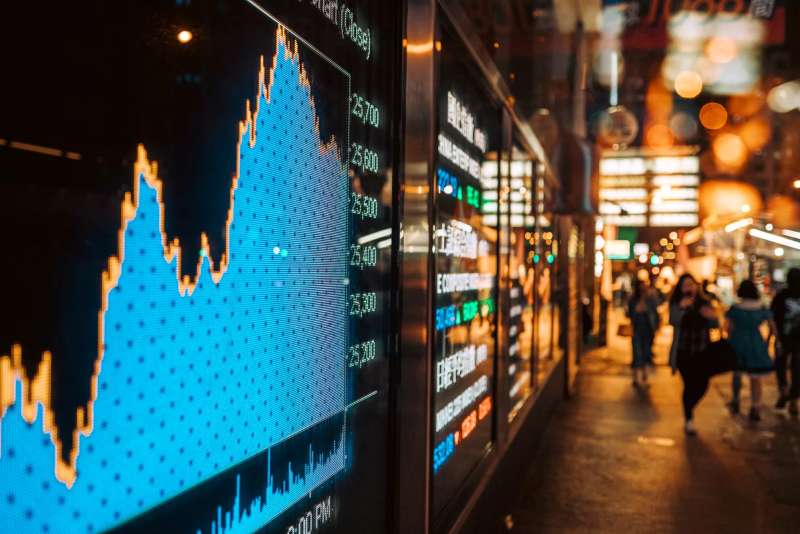Principal Monthly Viewpoints (October 2021)
Q: Principal Asset Management (Asia) Investment Management Team
A: Crystal Chan, Principal Asset Management (Asia) Senior Investment Specialist
Q:What factors will dominate the investment markets in the fourth quarter?
A: Though global investment markets experienced greater volatility in the last quarter due to the pandemic and the escalation of the Evergrande incident, developed market equities performed relatively well, with Japan recording a 2% gain, while Europe and the US remained flat. Among the major markets, Hong Kong stocks were the biggest laggards, dropping 15% on aggregate, and Asian stocks declined over 9% overall. With real interest rates rising, 10-year US Treasury yields rebounded before the end of the third quarter, while mature markets’ sovereign bonds generally lost ground.
Global economic growth began to slow because of the receding base effect, but still managed to maintain its positive trend. Taking the Principal Global Manufacturing PMI as an example, owing to the worsening pandemic and the underperformance of service industries, the figures of 65% of countries fell in September and further dropped to 55.9 overall. However, this figure is still considerably higher than the long-term average. 92% of the countries were still in the expansion zone.
In terms of monetary policy, the Fed is about to begin tapering, whereas central banks from a number of developed markets have begun to act. The Reserve Bank of New Zealand withdrew QE measures in July, and central banks in Canada, the UK and Australia are cutting down the pace of bond purchases. Meanwhile, the scale of ECB’s pandemic emergency purchase programme in the fourth quarter will be lower than the two preceding quarters.
The Global Financial Conditions Index, which reflects factors such as rates, monetary growth, spreads, market momentum and volatility, declined from 0.7 at the beginning of the year to 0.5 by the end of September, an indication of tightening financial conditions. It is however worth noting that the Fed’s balance sheet is currently over USD 8.3 trillion, more than doubled the size it was at the end of 2013, the last time bond purchases were scaled down. We expect the balance sheets of G4 central banks (the Fed, ECB, BoE and BoJ) to remain expansionary overall in 2022, with market liquidity remaining relatively abundant.
As for the fundamentals, driven by the base effect and continuously improving earnings, global stock market valuations have generally fallen and are relatively reasonable compared to the previous quarter. In Europe, the current P/E ratio has returned to its 10-year average. Among the major stock markets, the valuations in the US stocks are relatively expensive, while Hong Kong stocks are currently trading at a P/E slightly lower than the 10-year average and other major markets. Capital has been steadily flowing into stocks this year, with an inflow of USD 743 billion year-to-date, considerably ahead of bond and currency markets.
Q:What are some potential risks for investment markets?
A: Markets will focus on the impact of tapering by the Fed in the fourth quarter. More definitive answers were provided to the question of tapering at the September FOMC meeting. Fed Chair Powell stated that a “reasonably good” jobs report would trigger tapering in November, which would happen in an orderly fashion and should end by mid-2022. As the Fed currently buys USD 120 billion worth of bonds each month, it may need to curtail purchases by USD 15 billion in each of the following months. Since the US economy is now capable of withstanding the impacts of shifting policies, and markets have anticipated this move for quite some time, such measures should have very limited impact on the economy and asset prices.
The taper tantrum in 2013 happened because the then-Fed Chair Bernanke advocated a tighter policy despite a relatively weak economy, causing panics in the market. In fact, when the cutback in bond purchases was confirmed back then, major asset classes generally recorded positive gains a year on. Global stocks dipped for a short period, but still managed to rise by around 5% after a year. US stocks performed even better, rising nearly 14% and 25% after one and three years, respectively. Emerging stocks were relatively weaker, as tightening monetary policy in the US led to greater expectations of tighter liquidity and rate hikes, causing the USD to rally and hurting emerging market currencies and stocks.
Eight years later, a spike in confirmed cases due to the Delta variant compounded by extreme weather may increase the pressure on short-term US economic growth, but the local economy is still predicted to grow substantially in the second half of the year, thanks to the lower base effect. As for inflation, since the impact of factors related to economic reopening is gradually receding, our baseline prediction remains that the overall price levels may fall in the fourth quarter but will stay at high levels before returning to around 2% later next year. Economic and inflationary trends may fit the conditions of a progressive taper, but this factor alone may not be enough to induce a market pullback in the short run.
When QE comes to a close, we may possibly enter a rate hike cycle. New Zealand is likely to hike rates by the end of the year, followed by Canada, the UK and US in 2022. Markets may undergo corrections in the preparation and early stages of hikes. Therefore, if inflation in the US continues to be high, market expectations on the Fed’s hiking schedule could be affected, resulting in a pullback.
COVID-19 is undoubtedly another risk factor markets should be wary of. The global seven-day average of new cases rose again at the end of June, peaking at 660,000 cases at the end of August before falling back to 460,000, by the end of September. Including the US, there are still 37 countries with rising number of cases. Across major regions, the highest number of confirmed cases are from the US, India, UK and Turkey. The health crisis is worsening in many nations, including Singapore and South Korea, with vaccination rates of over 80% and close to 60%, respectively.
Over six billion doses of vaccine have already been administered worldwide, while 40% of the global population has received two doses of vaccine. Since the vaccination rate has exceeded 60% in many regions, particularly in developed markets, the increase in global vaccination rate will naturally slow down. Going forward, the pandemic should have a lesser impact on the economy. As the vaccination rate is continuously rising, focus will shift to stances of governments regarding the lifting of lockdown measures and reopening of borders.
Nonetheless, markets should not neglect the risk of a resurgence of COVID-19. On the issue of inflation, if a high savings rate is converted into fervent consumption in the U.S., or the labour shortage gets extended, inflation would remain high, which may affect the Fed’s exit strategy. Investors are also concerned whether the chain effect of Mainland’s industry regulatory policies would trigger systematic risks in China. These are the uncertainties plaguing investment markets in the fourth quarter.
Q: How should investments be allocated in the fourth quarter?
A: Developed market equities outperformed that of emerging markets by a considerable margin in the last quarter, and we believe this trend may continue. In the next quarter, we continue to prefer equities, and be most constructive on Europe, primarily due to the region’s steady pace of economic growth, a departure from continuously low inflation, accommodative monetary policies for some time to come, and the prospects of fiscal stimulus.
We are slightly optimistic on the US. Notwithstanding the prospects of a tighter monetary policy, the Fed is still cautious about rate hikes, and the country probably won’t enter a rate hike cycle until the end of 2022. While economic growth and corporate earnings may let up, they are expected to record healthy gains, providing support to the stock market.
We are also slightly optimistic towards Japan. Despite lackluster economic performance, we think the country’s vaccination programme is well on track, causing the new wave of the pandemic to peak and recede, thereby facilitating reopening of the economy. The USD may appreciate due to the expectations of policy tightening, which should impact the JPY negatively, benefitting local exporters.
We are neutral on Asia (ex-Japan). Some countries have accelerated vaccination rollout in recent months and should achieve herd immunity by the end of the year, helping economies that have lagged behind to resume activities sooner. However, the rapid rise in prices has forced some countries into rate hike cycles, and these should be joined by more countries in the future. A strengthening USD may also cause capital to flow out of Asia.
HK/China – We are slightly bearish towards HK stocks and neutral on A-shares. As downward pressure on the Mainland economy intensifies in the second half, supportive fiscal and monetary policies should be stepped up, while abundance of liquidity should boost stocks. Valuation of China and HK stocks are relatively reasonable, but the earnings outlook of A-shares is relatively better. Since China Concept Stocks affected by shifting Mainland regulatory policies are primarily listed in HK and the US, HK stocks should continue to experience volatility under the prospects of tighter regulations.
We are neutral on bonds overall. Yields on US Treasuries rose rapidly recently, with the yield on 10-year US Treasuries hitting a three-month high at one point. As markets factor in expectations of the Fed tapering, 10-year real rates rebounded from their low level, while the breakeven inflation rate, which reflects inflation expectations of markets, was also on the surge upon the rise in wages and energy prices.
Considering the Fed has thoroughly communicated its intention to taper, a slower economic growth and the peaking of inflation expectations, 10-year US treasury yields are unlikely to bounce back substantially, from where it is. We have therefore revised our standpoint on sovereign bonds upwards to neutral. With the economy operating at a slower pace, capital may flow towards higher quality corporate bonds. Thus, the view on investment grade bonds has been bumped to slightly positive, while that of high yield bonds has been shifted down to neutral.
(Written on 8th October 2021)

Crystal Chan
Senior Investment Specialist
Principal Asset Management (Asia)
DISCLOSURES
Investment involves risks. Past performance of any particular fund or product mentioned in this document is not indicative of future performance of the relevant fund or product, and the value of each fund or product mentioned in this document may go down as well as up. You should not invest solely in reliance on this document. There is no assurance on investment returns and you may not get back the amount originally invested.
You should consider your own risk tolerance level and financial circumstances before making any investment choices. If you are in doubt as to whether a certain fund or product mentioned in this document is suitable for you (including whether it is consistent with your investment objectives), you should seek legal, financial, tax, accounting and other professional advice to ensure that any decision made is suitable with regards to that your circumstances and financial position, and choose the fund(s)/product(s) suitable for you accordingly.
The information contained in this document has been derived from sources believed to be accurate and reliable as of the date of publishing of this document, and may no longer be true, accurate or complete when viewed by you. The content is for informational purpose only and does not constitute an offer, a solicitation of an offer or invitation, advertisement, inducement, representation of any kind or form whatsoever or any advice or recommendation to enter into any transactions in respect of the funds/products referred to in this document. This document is not intended to be relied upon as a forecast, research, or investment advice regarding a particular investment or the markets in general, nor is it intended to predict or guarantee the performance of any investment. The information does not take account of any investor’s investment objectives, particular needs or financial situation. You should not consider the information as a comprehensive statement to be relied upon. All expressions of opinion and predictions in this document are subject to change without notice.
Subject to any contrary provisions of applicable law, neither the companies, nor any of their affiliates, nor any of the employees or directors of the companies and their affiliates, warrants or guarantees the accuracy of the information contained in this document, nor accepts any responsibility arising out of or in connection with any errors or omissions of the contents set out in this document.
This document is the property of Principal Asset Management Company (Asia) Limited that no part of this document may be modified, reproduced, transmitted, stored or distributed to any other person or incorporation in any format for any purposes without Principal Asset Management Company (Asia) Limited’s prior written consent.
Source of this document is from Principal Asset Management Company (Asia) Limited.
This document has not been reviewed by the Securities and Futures Commission.
This document is issued by Principal Asset Management Company (Asia) Limited.
Useful Links
Quarterly Market Outlook Video - Q4 2021
Learn more
Quarterly Asset Allocation - Q4 2021
Learn more








